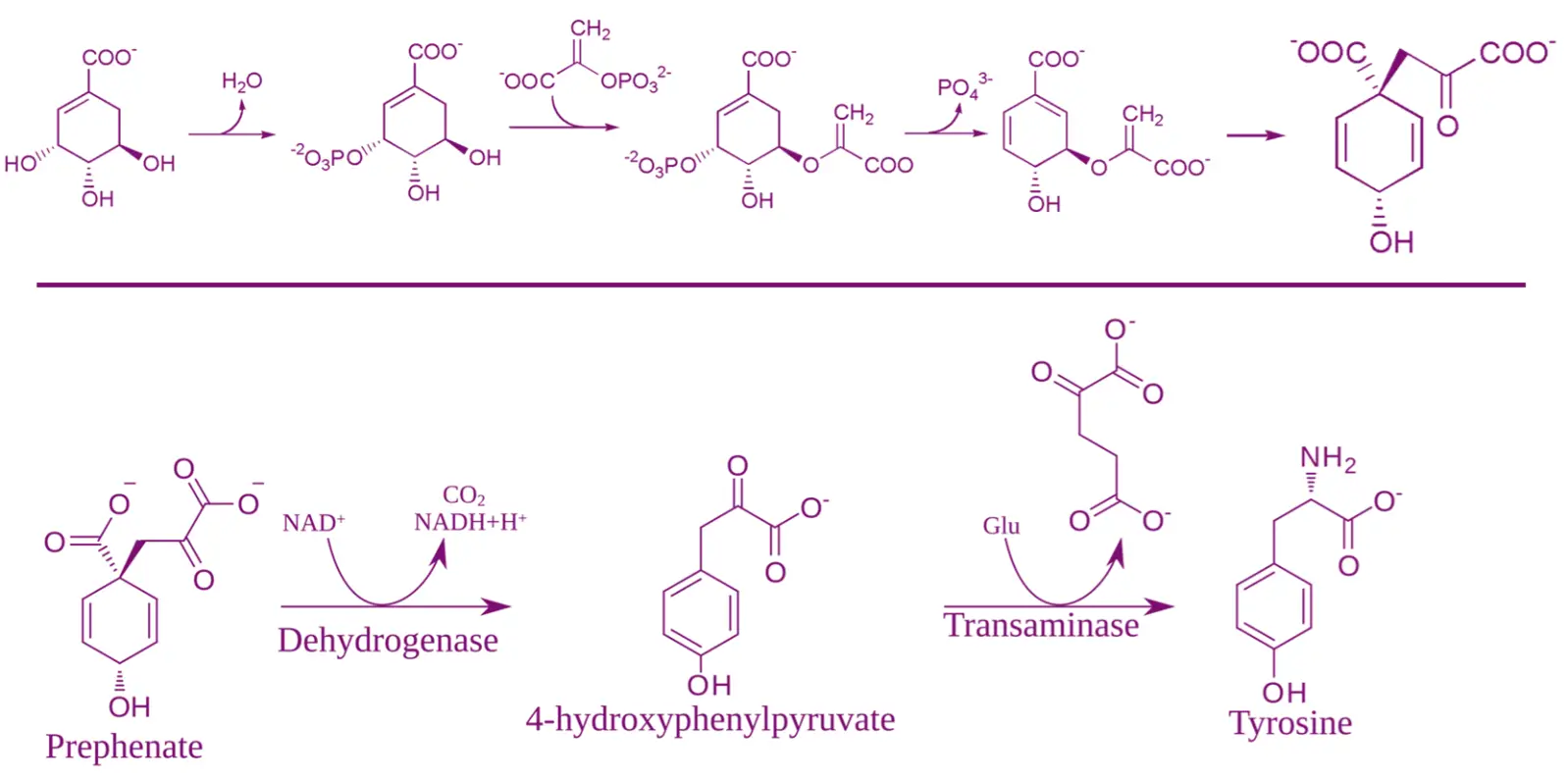- Basic Metabolic Pathways and Formation of Secondary Metabolites begin with essential processes like glycolysis, TCA cycle, and pentose phosphate pathway that generate energy and key intermediates.
- Basic Metabolic Pathways and Formation of Secondary Metabolites also lead to the synthesis of compounds like alkaloids, terpenoids, and phenolics, which help in plant defense, survival, and ecological interaction.
Shikimic Acid Pathway:
Overview:
- The Shikimic acid pathway is a central biosynthetic route responsible for the production of aromatic amino acids (phenylalanine, tyrosine, tryptophan) and various aromatic secondary metabolites.
- It is not present in animals, making it a major target for herbicides and antimicrobial agents.
Key Steps:

-
Formation of Shikimic Acid
- Starting materials:
- Phosphoenolpyruvate (PEP): Derived from glycolysis.
- Erythrose-4-phosphate: Derived from the pentose phosphate pathway.
- These precursors undergo condensation and multiple enzymatic reactions to form shikimic acid.
- Starting materials:
-
Formation of Chorismate
- Shikimic acid is phosphorylated to form shikimate-3-phosphate, which is then converted to chorismate.
- Chorismate is a crucial branching point leading to the biosynthesis of aromatic amino acids and other secondary metabolites.
-
Aromatic Amino Acid Biosynthesis
- Phenylalanine and Tyrosine: Chorismate is converted into prephenate, which serves as a precursor for these amino acids.
- Tryptophan: Chorismate is converted to anthranilate, a precursor to tryptophan.
- Phenylalanine and Tyrosine are important for secondary metabolic pathways like the phenylpropanoid pathway.
Major Secondary Metabolites from the Shikimic Pathway:
- Phenylpropanoids (via phenylalanine): Include flavonoids, lignins, coumarins, and phenolic acids.
- Alkaloids (some classes are derived from tryptophan or tyrosine).
- Indole derivatives (e.g., indole-3-acetic acid, the plant hormone auxin, derived from tryptophan).
- Benzoic acids (e.g., salicylic acid).
Biological Significance:
- Plant Growth and Development: Aromatic amino acids (phenylalanine, tyrosine, tryptophan) are precursors for proteins, hormones, and pigments.
- Defense Mechanisms: Secondary metabolites (e.g., phytoalexins, lignin, salicylic acid) protect plants from pathogens and herbivores.
- Pollinator Attraction: Flavonoids, from phenylpropanoids, contribute to flower pigmentation and attract pollinators.
- Structural Integrity: Lignins, derived from phenylalanine, provide strength to cell walls.
Thank you for reading from Firsthope's notes, don't forget to check YouTube videos!

